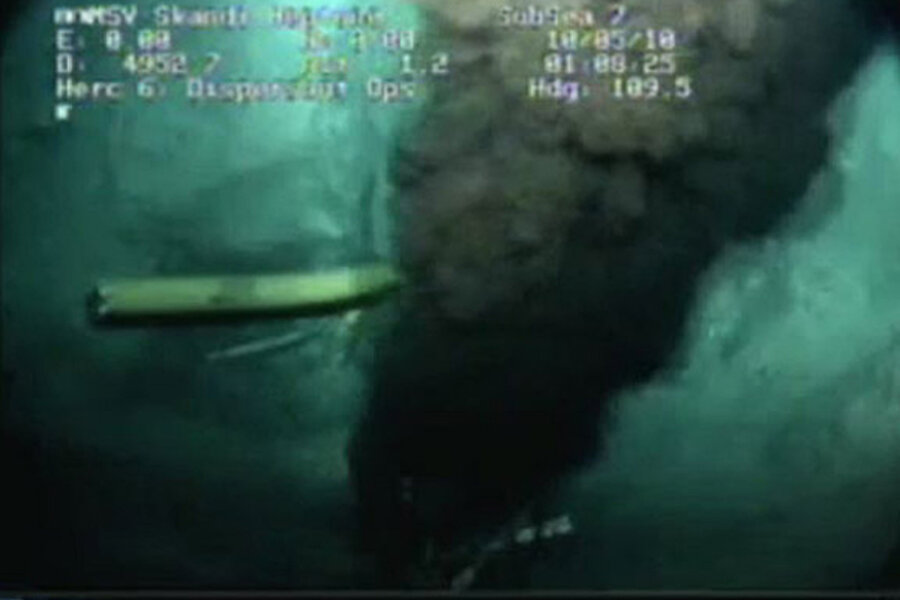Gulf oil spill: What if BP taps leaking Macondo well again?
Loading...
Even after the Gulf oil spill, it remains possible that, someday, someone’s car could be running on gasoline produced from the oil field currently spewing its contents into the Gulf of Mexico.
This might seem like a strange notion given the trouble that the so-called Macondo prospect has caused and the fact that the Deepwater Horizon oil rig above it exploded on April 20 and sank two days later. But energy analysts believe that BP may ultimately decide to develop the discovery even though it is not considered to be a giant oil field.
The main reason: the Macondo field is near other BP operations, so its oil – considered ideal for gasoline – could be piped ashore without a lot more expense.
IN PICTURES: Louisiana oil spill
“If it were my decision, from a corporate perspective, I would seriously consider development,” says David Dismukes, associate director of the Louisiana State University Center for Energy Studies in Baton Rouge. “They have already made the investment to understand the play and sunk a certain amount into it, so I would find it hard to believe they would walk away.”
First things first
For its part, BP says it’s too early to think about any commercial development of the Macondo prospect. “At this point, we genuinely want to get this shut-in, stop the flow of oil, and clean up,” says Toby Odone, a spokesman for BP in Houston.
But before the explosion that killed 11 workers, BP had considered the field viable because there were nearby oil fields. “In an infrastructure sense it is easier to develop a small find if it’s tied to another facility rather than if it’s away from other discoveries," says Mr. Odone. "As far as I know that was the case with this.”
BP, however, might also decide not to expend any more money on the prospect other than ongoing efforts to seal the well and drill relief wells.
“With all the hassle, maybe they’ll decide its better to seal it up and forget about it,” says Rick Mueller, an energy analyst at Energy Security Analysis, Inc. in Wakefield, Mass.
Tony Hayward, the CEO of BP, estimated the Macondo well contained about 50 million to 100 million barrels of oil in an interview with the Houston Chronicle on May 6. This would make it a relatively modest discovery. By contrast, BP announced on Sept. 2, 2009, what it termed a “giant” discovery from its Tiber prospect in the Gulf. Energy analysts say the term is usually associated with oil fields of at least 250 million barrels.
Quest for deepwater oil continues
Oil companies usually can only extract about 30 percent of the oil in a field, says Mr. Dismukes. He cautions that the BP estimate of as many as 100 million barrels in the Macondo prospect is based on limited information. Normally, oil companies drill several wells before they can determine the size of an oil field.
The Macondo field has been a challenge for BP, which acquired the lease from the US in 2008. According to RigZone, an online Houston-based trade publication that follows the oil drilling industry, BP started drilling in October 2009 using the Transocean Marianas, a semisubmersible drilling rig. However, at the end of November the oil rig was damaged by Hurricane Ida.
The drilling was then taken over by the Deepwater Horizon, another semisubmersible.
Most energy analysts expect most new US oil finds to come from deepwater in the Gulf of Mexico, provided the Deepwater Horizon accident doesn't curtail exploration. In 2008, the Energy Information Administration estimated proven oil reserves in the Gulf of Mexico were about 6 billion barrels or less than a year’s supply at current usage rates.
IN PICTURES: Louisiana oil spill
Related:





